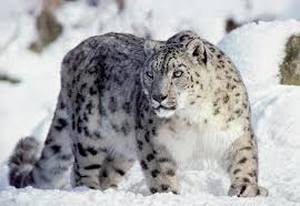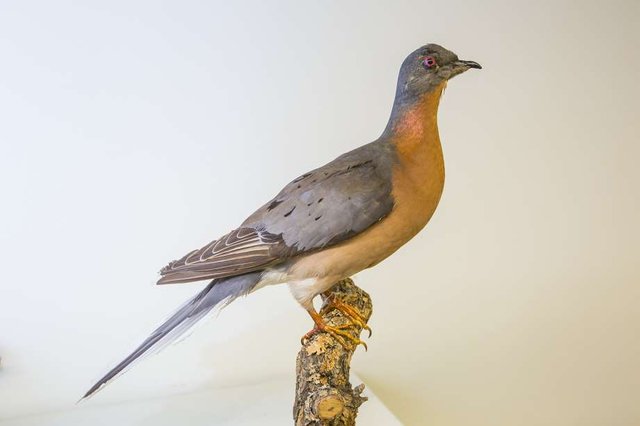We all love the Panda, I can remember that bright smile my kid brother had on him when he watched Kung Fu Panda Po fight the evil leopard, it's lovely the joy they can bring to humans. I decided to host a series on my blog tagged Kingdom Animalia where I bring the best of the animal kingdom, and today will see the Giant Panda in the spotlight. I happen to fancy this animal, probably because of their unique white and black colouration, wow, they look so adorable.

SOURCE
It's so sad they are still considered vulnerable to extinction, anyway let's get to know about this animal and how they have survived the animal kingdom this long
A BRIEF DESCRIPTION
An adult pandas are about 2-3 feet tall and 4-6 feet long. It has a tail being about 4-6 inches long, and they are well known for their unique colouration of black and white.
Although the origin of this distinct colouration is not known, theories exist of it, one being that it was brought by a need to stand out from other animals so as to be able to find each other for mating purposes. Another theory brings the idea of the need to serve as camouflage from predators. scientist have not confirmed a good reason for their colourations so this two ideology is just ok for now if you ask me.
The giant panda features for the most part of its body and belly a white coloration which contrast sharply with its black ears, it limbs and shoulders are black in colour so are the patches over the eyes, comparing with respect to sex, the male panda is a bit large and heavy than its female with both having quite a large head and muscular jaws (very flat muscular jaw when compared to other bears a perfect feature for grinding bamboo ).
Just as we have fingerprints which are unique with respect to individuals, pandas have a marking or markings a bit different from other pandas, that's nature for you.
HOW THEY COMMUNICATE WITH THEMSELVES
Known for their vocal communication pattern, they are referred to as the most vocal animals of the bear species.
They make bleating sounds Similar to that you would hear from a baby goat. They also make other sounds like barking honking, huffing and growling. Young ones are known for both croaking and squealing.
Vocal communication is not the only way a panda can communicate they do have another method of communicating called...(i just realised... no one has given the method a name yet). Anyway, I will explain it to you, maybe you can help us name it. In this communication pattern, a male and female panda communicate through their glands which they secret on trees, bamboos and rocks. The scent of a panda is so strong and could last for days, even weeks. It can communicate information like the individual age, sex as far as the reproductive condition of a panda which left its mark. Sometimes, a male panda would leave scents up high in trees by doing a handstand. quite Interesting right? Now, what will you call that?
FEEDING AND THEIR HABITAT
The home for this super cool bear species, the pandas Is a forest with at least two variants of bamboo, access to a water source and it has to be a very old forest.
An old forest is needful since the panda needs old logs and stumps very large in size for their dens. Its home might range from 5-8 kilometre square, might even be of a larger size if food is low in quantity in the area.
like other species of the bear family, a panda spends most of its time eating and sleeping. They spend as many as12 hours in a day eating, they prefer bamboos for diet. They eat lots and lots of bamboos due to the low nutritional contents of bamboos. To consume a bamboo, the will peel the outer layer which is hard in nature with teeth to eat the inner part which brings a soft tissue. They do eat bamboo leaves too and some grasses, fruits and insects.
BEHAVIOUR AND REPRODUCTION
The Giant panda is solitary animals in nature, who love their space and tend to attack any other panda seen encouraging its boundary.
Reasons for this is that giant pandas need lots of food and being a greedy animal in nature believes that any panda around its territory will bring food shortage and of course he wouldn't want that. Yes, he'll do anything to get rid of an intruder.
Though there are exceptions to this attitude: a mother with cubs and during on mating seasons. A female panda starting its oestrus(the period when it wants to mate) leaves scent marks to tell any surrounding male of its status. When a male panda has perceived and identifies a female status via her scent mark, he tends to find the female and tries to stay close to her till she is ready to mate.
They are slow breeders. Their oestrus lasts just for 24-72 hours. A matured female panda might breed just once in three years and so a typical wild female panda just might give birth to 5 cubs in a lifetime.
A Baby Panda is about 1/900 the size of parent and is seen to be almost hairless. Mother panda takes good care of its cub and does not leave her den for several days after giving birth to a cub.
8 to 10 weeks of age, the young cubs' eyes open and it is now able to crawl. At 21 weeks of age, it starts walking followed by eating bamboos at the age of 9 months. Mother Panda takes care of cub until about 18 months and is now ready to send it on its way so as to prepare for another baby cub.
THEY FACE ONLY FEW PREDATORS
Come to think of it, they are not just called Pandas but with an adjective "Giant", so, their size helps them to not be prey to predators in the animal kingdom.
Predators include the snow leopards, jackals and the yellow-throated martens all capable of killing a panda cub.
The Kung Fu Panda animated movie shows Po a panda being fought by a fierce snow leopard Tai Ling, and this story paints a real picture as the snow leopard also an endangered animal shares almost same habitat with the Pandas and tends to threaten the life of young pandas.
Can Giant Pandas Fight Back Predators?
Just like I earlier stated, the pandas are peaceful animals in nature which tries as much as possible to avoid confrontation of any form with any animal that does not mean weakness as they will fight back when there are no means of escape.
Just like other bears, pandas can protect themselves with their physical strength, jaws and teeth. Their height and weight can be intimidating to most animals, large molar teeth, strong muscle and jaws which are designed to crush bamboo can deliver a very nasty bite.
Finally, they are good climbers and they can swim too, these attributes listed above make a fully grown panda able to defend themselves from most predators.
HOW THEY LOST THEIR POPULATION
Gaint pandas are fascinating animals but until 2016 they were before now considered as an endangered species. There are many things which contribute to their low number some include
Destruction of their natural dwellings: Civilization and industrialization purposes, and also the need to build homes, roads and so on for an increasing population led to the felling of trees in forests leading to the bamboo shortage.
Their intense dependence on bamboo trees is a vulnerability factor as loss of this habitat tends to see them in search of a dwelling place. Bamboo tends to undergo a form of periodic die-Back which comes every 15-120 years and a vast number of the giant panda species tend to disappear during that period of time. Before now, the giant panda will have to migrate to an alternative source of bamboo, but not in the world of today as an extensive loss of their habitat have occurred over time.
Hunters sets traps for animals and sometimes the panda gets caught in these traps which might kill them. Though poaching of this animal have once been a major reason for the population decline, with the introduction of a high penalty for this it is believed to not pose any significant threat to this animal for now.
Another factor which brought about a low population density is the slow reproduction rate of pandas; unlike other animals like the red-billed quelea which I wrote about earlier having a very fast reproduction rate with 9 days incubation of eggs, the giant panda is very slow in reproducing, this contributed immensely to the low population of today.
HOW THEY ESCAPED EXTINCTION
We, humans, bear the cross to take any animal out of the verge of extinction, only then will we preserve them for generations to come.
Under the China Wildlife Protection Law, the giant panda received and still revives a top level of protection. They were also enlisted on Appendix 1 of the Convention On International Trade In Endangered Species which saw to ban of international trade of this animal.
Conservation plans were put in place for this species of bears which saw to the restoration of its habitat by the creation of forest reserve specifically for their protection.
Capture and breed programs were the only way forward in conserving this species which not only fight against the extinction of this specie, but also created an avenue to introduce them into the wild on the accomplishment of the goal against extinction.
Many organizations worked day and night in capturing and taking care of conservation of the giant panda improving daily in understanding their habitat, behaviour and population. The population of the giant panda was monitored constantly to grow the awareness of the near extinction of this animal amongst locals
Today with respect to the giant pandas' population there has been a recorded increase in the wild though still seen as a vulnerable specie of bears. The giant panda is today one of the recognized conservation symbols being the logo of WWF (an organization who worked tirelessly with the Chinese to conserve this loved species for generations to come).
HOW WE CAN WE HELP INCREASE THEIR POPULATION
The panda is a loved by all, Imagine a life without them, only having to tell about them to your kids in movies and pictures, that will be a big failure by humans.
Though there exist organizations in this battle already, we all have a role to play in one way or another help fight for the conservation of this species of bears, they include:
DONATIONS: A donation to organisations for conservation projects of this species is currently ongoing in China. This donation will go a long way to contribute to this fight in ways which includes: Protection of their reserve against patrol, illegal hunting or wood logging inside this projects to help limit harvesting of wood fuel in the pandas habitat, to also help in monitoring works and research which involves setting cameras which record pandas in mountains like the Monahan and Qinling Mountains.
** Smart Travels: Over the years, panda tourism is on the rise, strategies are being put in place to reduce the effect tourism have on the pandas' habitat which includes eco-tourism promotions.
** SPREAD THE WORD: You can help spread the word on the vulnerability of this animal through mediums like the social media, blogs, etc, informing the public of this beauty so as to build in them the need for conservation of this specie in any way they can.
Thoughts Of An Animal Lover
I think the panda to be a wonderful animal, their amazing characteristics which include a solitary nature make me remember a nature i once possessed, do you know male and female giant pandas come together only to mate and after that they both path ways with the male not helping mother cub in any way?, that's how solitary they can be (a bit extreme though) but they are in general a lovely species of bears with a white and black colour which looks awesome when they are viewed together. Here is a sad story of how they got their black colour marking, See the video below
Saving the giant panda from the verge of extinction was a win in the conservation of wildlife, this simply puts to light that we humans have a role to play to help keep the balance of nature by saving those animals near extinction, we still do have a long road ahead of us as there exist so many endangered animals which need our help as they may become extinct if we do nothing, so more effort still needs to be put into saving them all.
Lastly, the panda lost most part of its habitat due to deforestation by humans wh caret care of the consequences it might pose to this wildlife, we should put more effort to rebuilding these habitats lost by building reserves for these animals for which their habitat was lost
Join me every Monday on the Kingdom Animalia series as I bring the beauty of the animal kingdom to light.
Missed the second episode of The Extinct series? No worries, you can check it out below.
The Extinct #2 - Passenger Pigeon
REFRENCE
General Facts And Information
About The Giant Panda
Save The Giant Panda




.jpg)
.jpg)





A well written article. My only concern here is that these beautiful animals should be preserved. We cannot obviously go against nature. It is very interesting to read information about these beautiful creations of nature. Thanks for the article. Upvoted and followed.
Downvoting a post can decrease pending rewards and make it less visible. Common reasons:
Submit
Thanks for being here @bala41288
Downvoting a post can decrease pending rewards and make it less visible. Common reasons:
Submit
I was fortunate enough to be in Washington D.C. in the early 70s when China gifted the United States one of these beautiful creatures. At a recent visit to a local zoo I saw the amazingly cute Red Panda, which looks more like a fox.
I was unaware the snow leopard, is a natural predator to the giant panda.
Downvoting a post can decrease pending rewards and make it less visible. Common reasons:
Submit
They are amazing and beautiful creatures . You should see them play, very funny to watch. Thanks for reading @quiplet, watch out for the next on this series, Life is beautiful.
Downvoting a post can decrease pending rewards and make it less visible. Common reasons:
Submit
This one, I had the chance to see it twice, in two natural reserves. One was in Belgium and one in France (see this post of @lamouthe for this. There was a couple of pandas in both cases, in they gave birth to a baby (that we saw in Belgium but not in France as too small). China is really doing a lot for their pandas and this is great, although I am sure there are some economical reasons behind as well. But if this can help preserving the pandas, fine with me :)
Downvoting a post can decrease pending rewards and make it less visible. Common reasons:
Submit
It's nice China played a big part in preserving this animal . This should pass a lesson across to other countries who are less concerned about the animals around them. I agree with you, preservation of any endangered specie should come first.
Downvoting a post can decrease pending rewards and make it less visible. Common reasons:
Submit
Downvoting a post can decrease pending rewards and make it less visible. Common reasons:
Submit